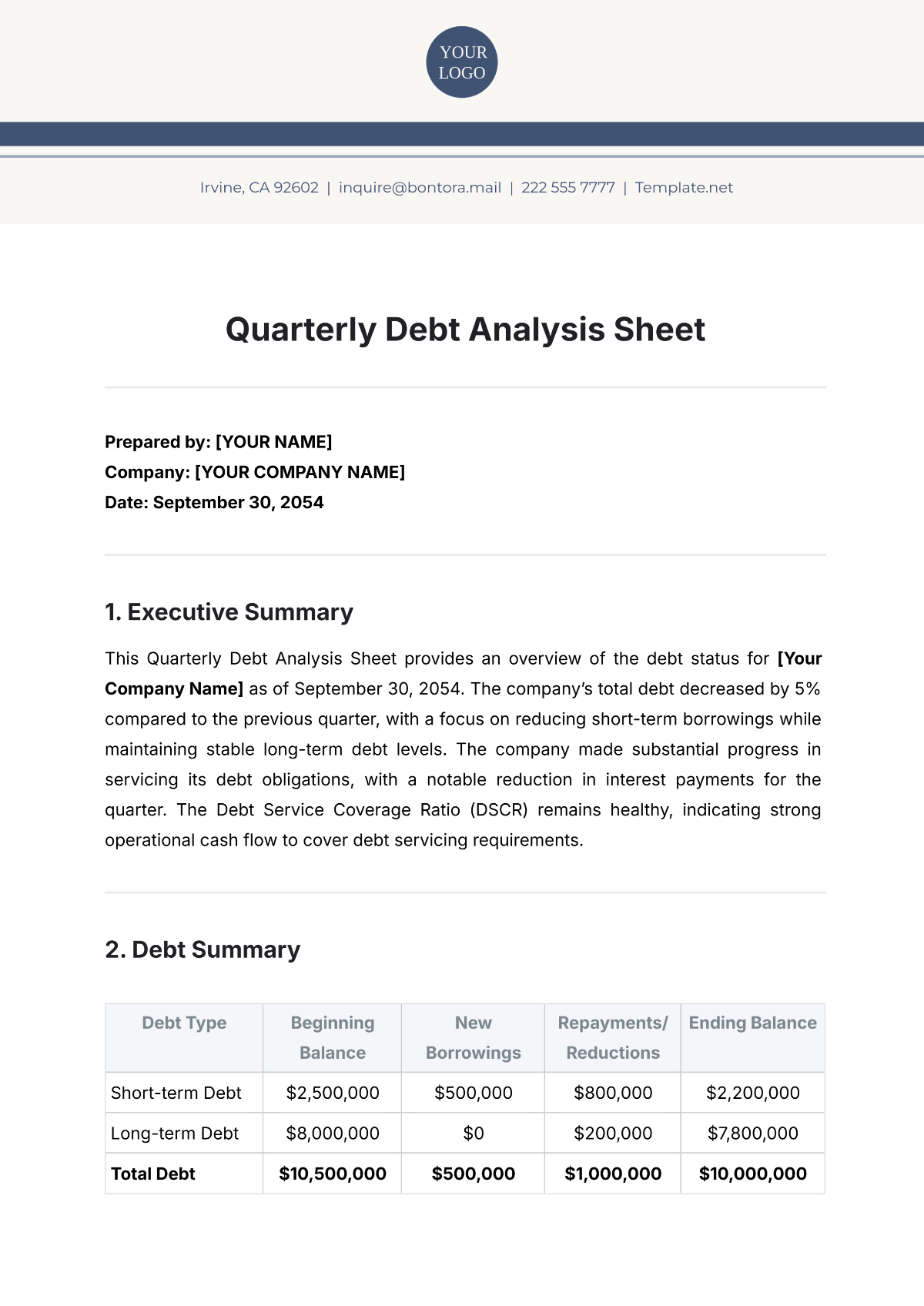BUSINESS CHANGE IMPACT ANALYSIS
Prepared by: [Your Name]
Contact information: [Your Company Email], [Your Company Number]
Address: [Your Company Address]
Website: [Your Company Website]
Social Media: [Your Company Social Media]
I. Introduction
This report presents a detailed analysis of the anticipated impacts of the proposed business changes on [Your Company Name]. The primary objective is to identify potential risks, benefits, and effective strategies for managing and adapting to these changes in a dynamic business environment.
II. Overview of Proposed Changes
Specific Changes:
Implementation of a new Customer Relationship Management (CRM) system (Salesforce CRM) to streamline customer interactions, track leads, and manage customer data effectively.
Reorganization of key departments, including Sales, Marketing, and Customer Support, to foster greater collaboration, improve workflow efficiency, and enhance customer experience.
Introduction of a new line of eco-friendly products, including sustainable packaging and energy-efficient devices, to align with growing market trends and meet consumer demand for environmentally conscious solutions.
Appointment of new executives, including a Chief Technology Officer (CTO) and a Chief Sustainability Officer (CSO), to drive innovation, digital transformation, and sustainable business practices.
Optimization of workforce allocation through skill mapping, training programs, and performance metrics to ensure resource efficiency and workforce development aligned with organizational goals.
III. Areas Impacted by the Change
Business Departments Impacted:
Sales and Marketing: Adapt strategies to leverage the capabilities of the new CRM system, targeting specific customer segments, and aligning marketing campaigns with eco-friendly product offerings.
Human Resources: Developing training modules to equip employees with the skills required for using new technologies, fostering a culture of innovation, and supporting career growth opportunities.
Production: Upgrading manufacturing processes, incorporating sustainable practices, and ensuring compliance with environmental regulations for eco-friendly product lines.
Customer Support: Implementing omnichannel support solutions within the CRM system, enhancing responsiveness, and providing personalized customer experiences.
Research and Development: Investing in R&D for product innovation, market research for identifying emerging trends, and sustainability initiatives for eco-friendly product development.
IT and Systems: Integrating the new CRM system with existing IT infrastructure, ensuring data security, scalability, and seamless functionality across departments.
IV. Impact Analysis
Positive Impacts:
Enhanced operational efficiency: Automated processes, data-driven decision-making, and improved collaboration lead to faster task completion and resource optimization.
Improved customer satisfaction: Personalized interactions, timely support, and environmentally conscious products enhance overall customer experience and brand loyalty.
Market expansion: Launching eco-friendly product lines taps into new customer segments, enhances brand reputation, and drives revenue growth.
Innovation culture: New leadership fosters a culture of innovation, agility, and sustainability, positioning the company as a market leader in technological and environmental initiatives.
Negative Impacts:
Initial productivity dip: Employees may require time to adapt to new systems and processes, leading to a temporary decrease in productivity.
Cost implications: Investments in technology upgrades, training programs, and sustainability initiatives may result in short-term cost increases.
Organizational restructuring challenges: Changes in leadership and departmental structures may cause uncertainty and require effective change management strategies.
Market adaptation: Educating consumers about new product offerings and sustainability benefits may initially face resistance or confusion in the market.
V. Risk Management and Mitigation Strategies
Risk Identification:
Conduct comprehensive risk assessments covering technological risks, operational disruptions, regulatory compliance, and market acceptance challenges.
Engage stakeholders at all levels to identify potential barriers, concerns, and opportunities associated with the changes.
Risk Mitigation Strategies:
Develop robust change management plans with clear communication strategies, stakeholder engagement initiatives, and regular progress updates.
Implement phased deployment of changes to minimize disruptions, conduct pilot tests, and gather feedback for iterative improvements.
Allocate resources for employee training, skill development programs, and change readiness assessments to ensure smooth transitions.
Monitor key performance indicators (KPIs), customer feedback, and market trends to adjust strategies, address emerging risks, and capitalize on opportunities proactively.
VI. Implementation Plan
Timeline and Milestones:
Define a detailed timeline for implementing each change initiative, including milestones, checkpoints, and dependencies.
Establish key performance indicators (KPIs) and benchmarks to measure progress, track outcomes, and evaluate the effectiveness of implemented changes.
Resource Allocation:
Allocate budgetary resources, human capital, and technological infrastructure to support the successful implementation of proposed changes.
Ensure alignment with strategic priorities, resource constraints, and organizational capabilities to optimize resource utilization and maximize ROI.
VII. Key Performance Indicators (KPIs)
Below is a Chart showcasing the projected impact of the proposed changes based on key performance indicators:
These projected improvements demonstrate the anticipated positive outcomes of our strategic initiatives, reinforcing our commitment to driving sustainable growth and success.
VIII. Conclusion
The Business Change Impact Analysis highlights the strategic importance of our proposed changes. By embracing new technologies, fostering innovation, and prioritizing sustainability, we aim to achieve operational excellence and customer-centricity. Effective risk management, proactive mitigation strategies, and robust implementation plans are vital for navigating challenges and seizing growth opportunities. Our commitment to adaptability and excellence positions us for long-term success and leadership in a dynamic business landscape.

















































